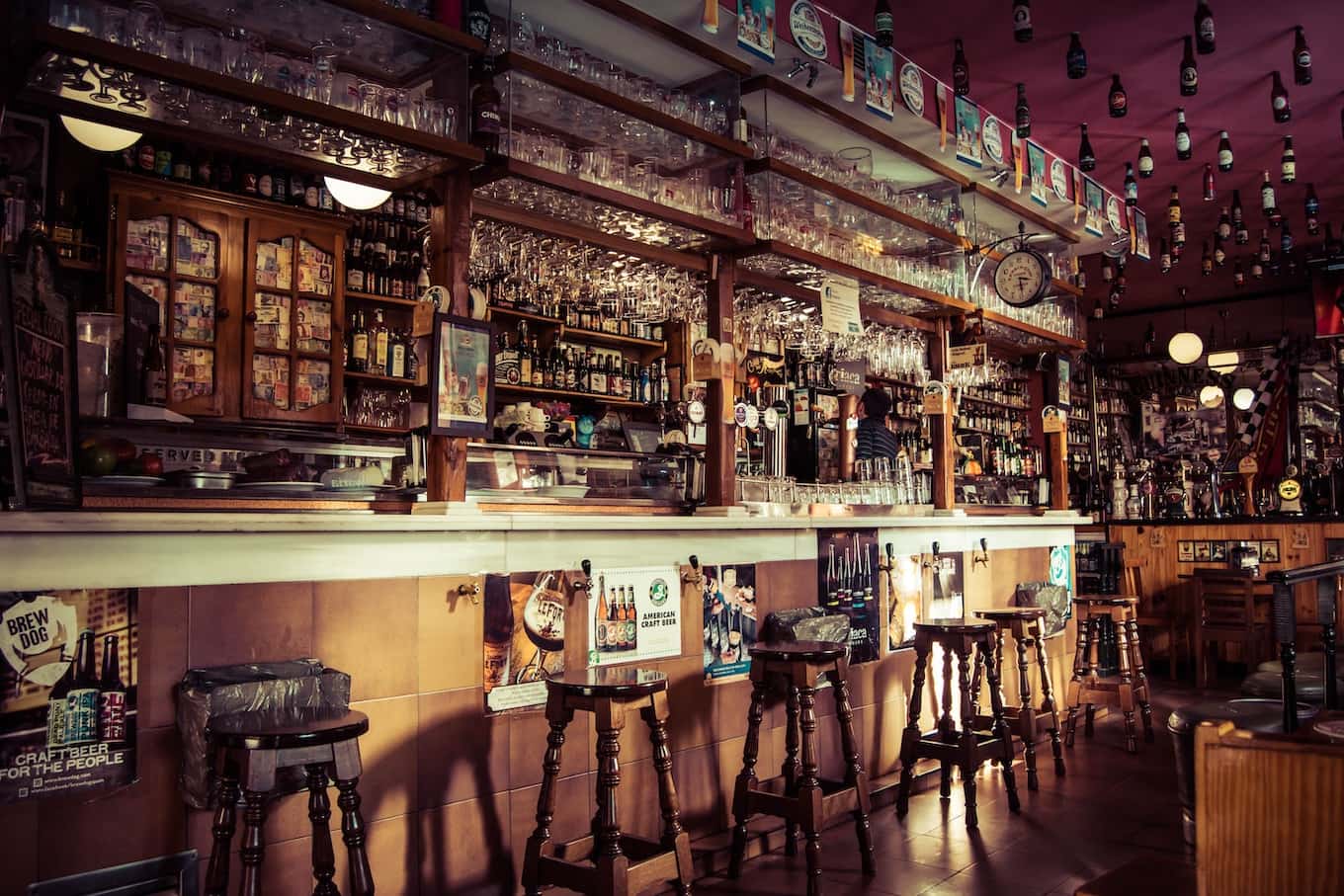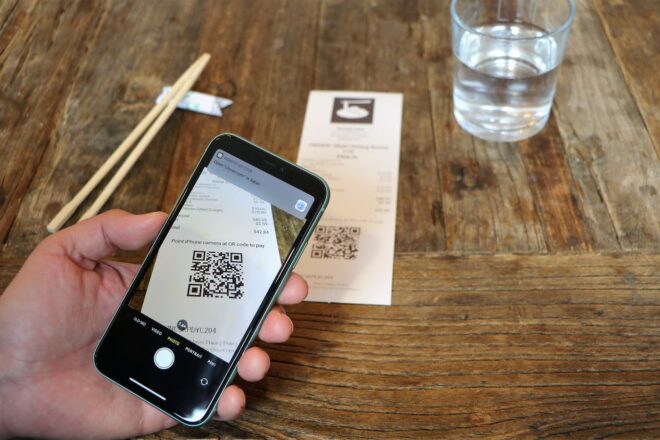4 cash flow management strategies for bars
Editorial Team
9 min read
Owning a bar comes with a lot of responsibilities. You’re managing staff, inventory, expenses, and more, all while trying to keep the party vibes going. It’s a lot to handle, and the failure rate is high. One key to making a vibrant space succeed in the long term: managing cash flow.
What is cash flow? It’s simply the movement of money in and out of your bar. As any good business owner knows, you want more green coming in than out. Accomplishing that requires a solid grasp of the inner workings of your business and using the right tools to keep the reins tight.
For many owners, the non-stop demands of running a bar leave little time for analyzing business activity in a meaningful way. Things slip through the cracks. Mistakes at the cash register. Expired inventory. These small errors add up, and when you’re operating on razor-thin margins, this could mean the difference between keeping the good times going and shutting your doors for good.
Read on for strategies to keep your bar’s cash flow management in tip top shape.
1. Know your business.
Having a solid grasp on your business’ daily ebb and flow—from a bird’s eye view all the way down to the nitty gritty—is crucial for every bar owner. Here’s how.
Maintain a daily business review, which is simply a record of each day’s business activities. Consider this your bar’s financial Instagram. You can scroll back in time to see a snapshot of your business at any point, use the data to spot trends in sales and anticipate future demand. Overtime you can analyze customer flow, seasonal activity and payroll costs, giving you the insight to plan for the future. Let’s say customer traffic surged last summer because of the draw of your popular beer garden and you were short staffed. Now you know to hire a few extra hands once the weather warms up. Or if a certain menu item isn’t selling well, it may be worth nixing it for something more popular and profitable.
Clover apps such as Insights and Cash Log will help you see the big picture and zero in on the details of where your cash is going.
Check in on your Key Performance Indicators (KPIs). These measurements help you monitor your business’ financial health. Start with these nine numbers to quickly assess where things stand — and where things need to improve. When it comes to evaluating your cash flow situation, the Debt Service Coverage Ratio is your friend. It simply measures cash in against cash out by dividing your net operating income (EBITDA, or “earnings before interest taxes, depreciation, and amortization”) by your yearly debt payments.
DSCR = EBITDA / Annual Debt Payments
This would come in handy if you were considering taking out a loan. If you calculated a DSCR of 1, you’re breaking even and not in the best position to borrow money. A DSCR of more than 1 means that there’s more cash flowing in than out; the higher the number, the better situated you are to meet upcoming loan payments.
2. Know how to plan.
There are the regular expenses you can easily predict—rent, for example—and then there are the surprises, like when the air conditioner dies in the middle of the summer. To protect your cash flow, you need to plan for both.
When you budget for upcoming expenses like rent, utilities, payroll, inventory, and so on, your business is prepared for this regular outflow of cash and you know this money is already tied up. You know the minimum cash you need coming in to cover these expenses. A savings club is an annual savings tool that automatically collects funds every day and returns them to you in December to cover year-end expenses.
Of course, you’ll need much more if you want to turn a profit and have the extra financial cushion to cover unexpected problems. Here are ways you can plan ahead to curb overspending and bring in more cash.
Manage your staff to ensure you have just the right amount of workers on hand. When you over staff, everyone loses. Your payroll expenses go up and your staff makes less on tips. Of course, when you under staff, customer turnover takes longer, hurting sales, and you end the day with a burnt-out staff. Lean on your daily business reviews from the past so you have a better sense of customer demand and the times of the year that require staff adjustments.
Pay cash upfront if it helps you save money. Many beverage and food distributors offer a discount to clients who pay right away. If prompt payments translate to trimmed costs, these savings will add up over time and give a boost to your cash flow.
Plan ahead for surprises. When you set small amounts aside regularly, you eventually save a lump sum that can cover surprise costs, like replacing the air conditioner, which ultimately protects your cash flow.
Create a gift card program. Not only does this encourage customer loyalty and offer another way to patronize your bar, but it helps you lock in customer payments upfront. And getting cash in the door quickly is a key factor in the cash flow management game, especially in the bar industry where cash flow is tight.
In the spirit of speeding up the inflow of cash, consolidating your financial activity with one bank cuts down on processing time and gets money deposited into your account faster. Another way to hasten cash your way is to adjust your official day end time. Clover’s default closing time is 1:00 a.m. for merchants, but if you close up even a few hours before that, you could be looking at a faster turnaround of when the money reaches your account. Reach out to Clover support if you want to make any adjustments.
Tighten up your invoice system. Say you rent your bar as an event space or provide another service that requires invoicing. If you want your funds fast, make it easy for clients to pay you. Create an invoicing schedule so you invoice on time, make sure you have correct customer contact names and addresses, provide clear explanations of charges, clearly define late payment terms and offer simple payment options.
Borrow wisely. If your bar needs a loan and is in a good position to borrow money, you’ll need to carefully consider your options. Bank loans are cheaper, but the application process takes longer. Clover Capital can get cash in your hands in as little as 3-5 business days. The model is rather innovative: Clover Capital can automatically withhold a small percentage of your daily credit card sales to repay your cash advance.
Get your funds faster. Any merchant knows that if you have a big day of sales one day, it take a while for that money to find its way to your account. With Clover Rapid Deposit, you can access your funds faster, whenever you need them. You can get your funds receivable as fast as the next day, which can come in handy if you are short on cash and payroll is due, or another big-ticket expense is looming.
3. Know how cash is being handled…and mishandled.
Taking a deep look at the movement of your cash can help you uncover leaks in the system. Unfortunately, these problems can crop up at various places throughout a business, sometimes by mistake, sometimes as theft. Fortunately, a variety of tools can help you find and fix these issues swiftly.
Monitor in real time the cash out to employees or registers with Cash Track. When a shift end, you can reconcile an employee’s final tally to yours, which can highlight any irregularities. The app provides daily shift reports and can also help calculate tips. This app, along with Ping Me If, will send alerts when certain events happen, such as when an order is deleted, a payment, refund, tip, or discount exceeds a specified amount, and more.
Track your inventory closely. As a bar owner, you know how easy (and expensive) alcohol theft can be. Using the Clover POS inventory tracking system can help you stop this behavior in its tracks. Bottle Keeper helps you track your liquid stock to address waste, theft and basic inventory management.
4. Know how to save money daily.
Since stemming the flow of outbound money is your ultimate goal, it’s important to identify ways to save money daily along different points of the process.
Going green helps you build savings into your everyday operations. When it’s time to buy or upgrade appliances, invest in energy efficient products. Even smaller changes such as installing LED light bulbs and low-flow faucets can cut your expenses.
DAVO Sales Tax automatically sets aside your sales tax on a daily basis, then files and pays it in full when it’s due. This saves you from encountering unexpected tax bills or late fees.
Update your menu. When you keep an unpopular drink or dish on the menu, it cuts into your profits. Get rid of items that don’t sell and replace them with something crowd pleasing.
Don’t let your perishables go to waste. Tossing inventory is like flushing cash down the toilet. Stay on top of things with Recipe Keeper, which tracks what you have on hand for your menu items and monitors your stock as you sell. This helps you reduce waste.
If you need a bar POS system to help you manage operations, cash flow, and more, connect with a Clover Business Consultant today.
GET STARTEDRelated Posts
How to help increase restaurant revenue with digital payment solutions
Financial analysis components for small business
Popular Topics
Stay In Touch
Sign up and learn more about Clover.
Thank you for your subscription!
Recent Stories
- How to evaluate employee performance like an enterprise company
- Dropshipping: What it is & why it might be smart for your small business
- What you need to know about automatic gratuity laws for restaurants
Please share your contact information
to access our premium content.
Thank you for sharing your contact information.
Download Now





